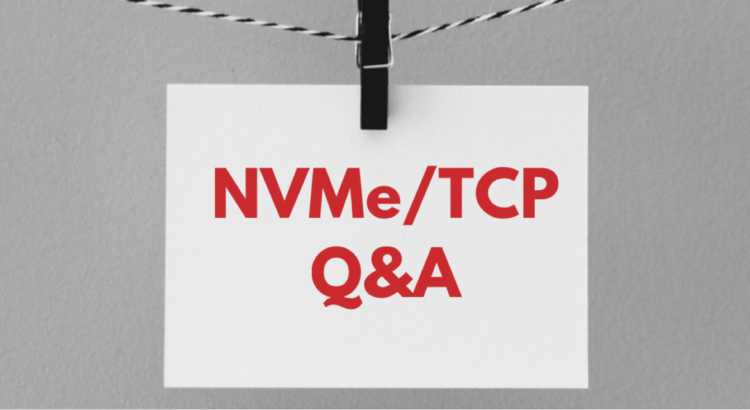
Category: NVMe


Considerations and Options for NVMe/TCP Deployment

Object Storage: Got Questions?
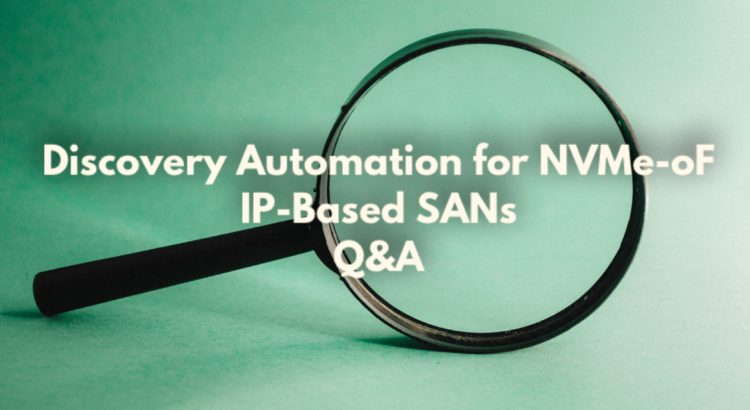
A Q&A on Discovery Automation for NVMe-oF IP-Based SANs

Automating Discovery for NVMe IP-based SANs
How SNIA Swordfish™ Expanded with NVMe® and NVMe-oF™
 specification and ecosystem are growing in scope to include full enablement and alignment for NVMe® and NVMe-oF client workloads and use cases. By partnering with other industry-standard organizations including DMTF®, NVM Express, and OpenFabrics Alliance (OFA), SNIA’s Scalable Storage Management Technical Work Group has updated the Swordfish bundles from version 1.2.1 and later to cover an expanding range of NVMe and NVMe-oF functionality including NVMe device management and storage fabric technology management and administration.
The Need
Large-scale computing designs are increasingly multi-node and linked together through high-speed networks. These networks may be comprised of different types of technologies, fungible, and morphing. Over time, many different types of high-performance networking devices will evolve to participate in these modern, coupled-computing platforms. New fabric management capabilities, orchestration, and automation will be required to deploy, secure, and optimally maintain these high-speed networks. Read More
specification and ecosystem are growing in scope to include full enablement and alignment for NVMe® and NVMe-oF client workloads and use cases. By partnering with other industry-standard organizations including DMTF®, NVM Express, and OpenFabrics Alliance (OFA), SNIA’s Scalable Storage Management Technical Work Group has updated the Swordfish bundles from version 1.2.1 and later to cover an expanding range of NVMe and NVMe-oF functionality including NVMe device management and storage fabric technology management and administration.
The Need
Large-scale computing designs are increasingly multi-node and linked together through high-speed networks. These networks may be comprised of different types of technologies, fungible, and morphing. Over time, many different types of high-performance networking devices will evolve to participate in these modern, coupled-computing platforms. New fabric management capabilities, orchestration, and automation will be required to deploy, secure, and optimally maintain these high-speed networks. Read More
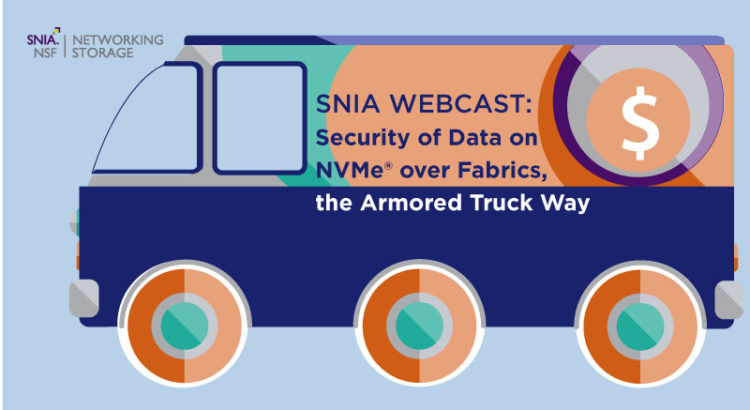
Protecting NVMe over Fabrics Data from Day One, The Armored Truck Way

NVMe® over Fabrics for Absolute Beginners
 for Absolute Beginners.” It seems to have resonated with a lot of people and it appears there might be a call for doing the same thing for NVMe® over Fabrics (NVMe-oF
for Absolute Beginners.” It seems to have resonated with a lot of people and it appears there might be a call for doing the same thing for NVMe® over Fabrics (NVMe-oF ).
This article is for absolute beginners. If you are a
seasoned (or even moderately-experienced) technical person, this probably won’t
be news to you. However, you are free (and encouraged!) to point people to this
article who need Plain English
).
This article is for absolute beginners. If you are a
seasoned (or even moderately-experienced) technical person, this probably won’t
be news to you. However, you are free (and encouraged!) to point people to this
article who need Plain English to get started.
A Quick Refresher
Any time an application on a computer (or server, or even a consumer
device like a phone) needs to talk to a storage device, there are a couple of
things that you need to have. First, you need to have memory (like RAM), you
need to have a CPU, and you also need to have something that can hold onto your
data for the long haul (also called storage).
Another thing you need to have is a way for the CPU to talk
to the memory device (on one hand) and the storage device (on the other). Thing
is, CPUs talk a very specific language, and historically memory could speak
that language, but storage could not.
For many years, things ambled along in this way. The CPU
would talk natively with memory, which made it very fast but also was somewhat
risky because memory was considered volatile. That is, if there was a
power blip (or went out completely), any data in memory would be wiped out.
Not fun. Read More
to get started.
A Quick Refresher
Any time an application on a computer (or server, or even a consumer
device like a phone) needs to talk to a storage device, there are a couple of
things that you need to have. First, you need to have memory (like RAM), you
need to have a CPU, and you also need to have something that can hold onto your
data for the long haul (also called storage).
Another thing you need to have is a way for the CPU to talk
to the memory device (on one hand) and the storage device (on the other). Thing
is, CPUs talk a very specific language, and historically memory could speak
that language, but storage could not.
For many years, things ambled along in this way. The CPU
would talk natively with memory, which made it very fast but also was somewhat
risky because memory was considered volatile. That is, if there was a
power blip (or went out completely), any data in memory would be wiped out.
Not fun. Read More
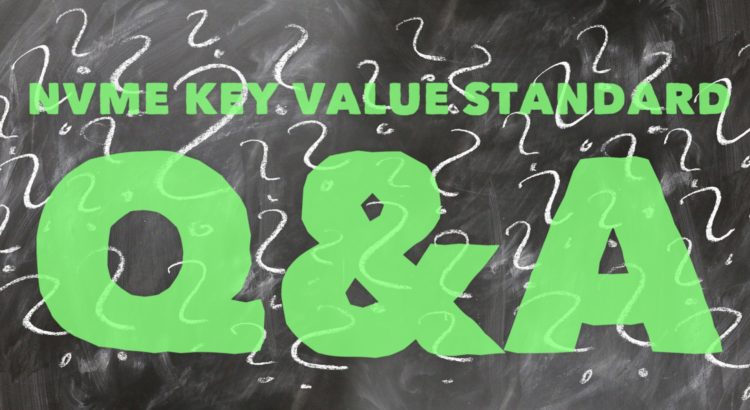
NVMe Key-Value Standard Q&A
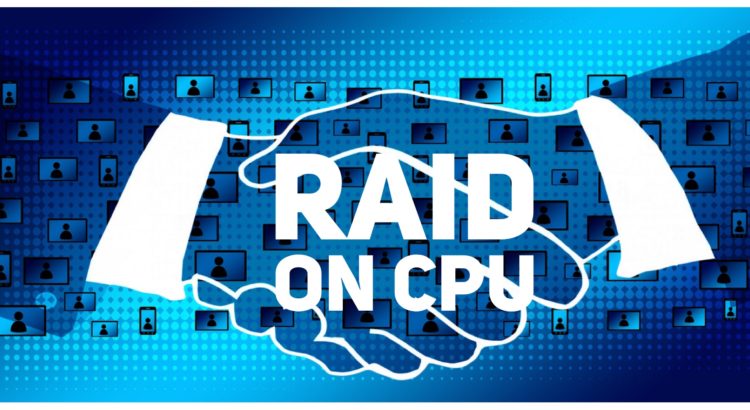
An FAQ on RAID on the CPU
A few weeks ago, SNIA EMEA hosted a webcast to introduce the concept of RAID on CPU. The invited experts, Fausto Vaninetti from Cisco, and Igor Konopko from Intel, provided fascinating insights into this exciting new technology.
The webcast created a huge amount of interest and generated a host of follow-up questions which our experts have addressed below. If you missed the live event “RAID on CPU: RAID for NVMe SSDs without a RAID Controller Card” you can watch it on-demand.
Q. Why not RAID 6?
A. RAID on CPU is a new technology. Current support is for the most-used RAID levels for now, considering this is for servers not disk arrays. RAID 5 is primary parity RAID level for NVMe with 1 drive failure due to lower AFRs and faster rebuilds.
Q. Is the XOR for RAID 5 done in Software?
A.Yes, it is done in software on some cores of the Xeon CPU.
Q. Which generation of Intel CPUs support VROC?
Read More